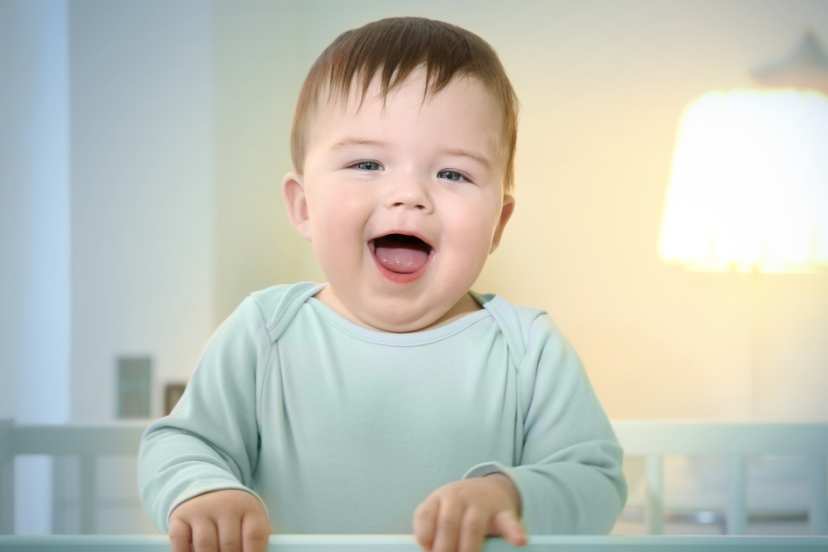Baby Standing in Crib: Learn The Joys and Safety
As parents, witnessing our little ones achieve milestones is a journey filled with wonder and excitement. One such milestone that brings delight is the moment when babies start standing in their cribs. It’s a captivating phase that signifies not only physical growth but also cognitive and motor development. In this article, let’s delve into the world of babies standing in cribs, exploring the benefits, safety measures, and ways to support this incredible milestone.
Why Babies Standing in Cribs Matter
Building Confidence and Independence
Babies are natural explorers, eager to interact with their surroundings. When they stand in their cribs, they gain a newfound perspective on their environment. This helps them develop a sense of confidence and independence as they start to realize their ability to control their body movements.
Strengthening Muscles and Bones
Standing requires effort from various muscle groups, contributing to the strengthening of the baby’s legs, core, and back muscles. These physical developments are crucial building blocks for future motor skills such as walking and running and continues to improve baby sensory.
The Milestones Associated with Standing
Developmental Progression
Standing in the crib is a significant developmental milestone that typically occurs around 8 to 10 months. It follows the natural progression of other achievements like rolling over, sitting, and crawling. Every baby’s journey is unique, so it’s important to embrace individual timelines.
Balance and Coordination
As babies learn to stand, they refine their balance and coordination skills. These skills are developed through trial and error as they shift their weight and make adjustments to stay upright.
Ensuring Safety While They Stand

Crib Safety Measures
Prioritize safety by ensuring the crib is in excellent condition. The mattress should be at the correct height, allowing the baby to stand without any danger of falling out. Remove pillows, blankets, and stuffed toys to prevent any obstruction.
Supervision Is Key
While the sight of your baby standing is heartwarming, supervision is paramount. Babies may lose their balance or attempt to climb, potentially leading to accidents. Keep a watchful eye and be ready to offer support if needed.
Encouraging and Supporting a Baby Standing in Crib
Providing Supportive Furniture
Introduce baby-friendly furniture designed to help them pull themselves up. Low tables or cribs with sturdy railings offer excellent support for babies to grasp onto and practice standing.
Interactive Play
Engage your baby in interactive play sessions. Use toys that encourage them to reach, grasp, and stand. This not only enhances their physical skills but also fosters cognitive development.
Addressing Concerns & Myths of Baby Standing in Crib

Bowlegged Appearance
It’s common for parents to worry that standing might cause their baby’s legs to become bowed. Rest assured, this is a natural phase in a baby’s development, and their legs will straighten as they continue to grow.
Delayed Walking
Contrary to a common myth, early standing doesn’t necessarily lead to delayed walking. Each milestone is independent and contributes to overall motor skill development.
Transitioning from Standing to Walking
Natural Progression
Standing in the crib paves the way for the next milestone: walking. Babies often transition from cruising along furniture to taking their first steps independently.
Creating a Stimulating Environment

Floor Play
Encourage floor playtime to allow babies to explore different positions, such as rolling, crawling, and standing. This variety supports holistic development.
Baby-Proofing
As babies explore their newfound ability to stand, ensure a safe environment. Baby-proof the area by securing furniture and removing any hazards.
Conclusion
The journey of babies standing in cribs is a testament to their incredible growth and determination. It’s a joyous phase that supports their physical and cognitive development. By fostering a safe and encouraging environment, parents can play a pivotal role in helping their little ones reach new heights, quite literally.
FAQs:
1. Is it safe for my baby to stand in the crib unsupervised?
It’s important to supervise your baby while they stand in the crib to prevent falls and accidents.
2. Can I encourage my baby to stand before they reach the typical milestone age?
While you can provide opportunities for your baby to practice standing, it’s important to let them progress at their own pace.
3. Are there toys that can help my baby practice standing?
Yes, toys like activity tables and pull-up bars can provide support and encourage standing.
4. What if my baby seems hesitant to stand?
Some babies may take longer to feel comfortable standing. Be patient and provide a supportive environment for them to explore.
5. When should I be concerned about my baby’s standing development?
If your baby shows no interest in standing by the time they’re around 12 to 14 months, consult a pediatrician to ensure their development is on track.




